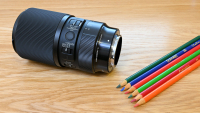Digital Camera World Verdict
The Panasonic Lumix 100mm hugely impresses with its compactness for a full-frame 1:1 macro lens, contrasting starkly with larger competitors. Complementing Panasonic's other prime lenses, its size consistency aids in balancing cameras for video work. The sharpness is great across the frame, with great quality images.
Pros
- +
Incredibly compact and light
- +
Near silent autofocus
- +
Great image quality across the frame
- +
Same balance as other Panasonic primes
Cons
- -
No optical image stabilization
- -
Other brands expanding beyond 1:1
- -
Occasional close-focus hunting
Why you can trust Digital Camera World
Editors note: this lens review was first published Jan 8 2024, however after publication, Panasonic informed us the lens used for testing had been damaged in transit affecting its performance. Accidents happen, and we have now retested a new copy of the lens and updated this review accordingly.
Panasonic cameras are going from strength to strength, and in 2023 – were the fastest-growing full-frame camera brand. However, Panasonic’s Lumix S L-Mount lineup still lags a little behind the competition, with one major omission being the lack of a standard macro lens.
Thankfully, the L-Mount Alliance saves the day here for Panasonic shooters, with fellow members Leica or Sigma stepping in to fill this gap with some superb choices like the Sigma 105mm f/2.8 DG DN Macro, as well as Venus Optics and TTArtisan offering some more budget options.
But what is a camera system without good first-party lenses? Now, Panasonic finally has seen fit to plug this very non-macro-sized hole with the brand new Lumix S 100mm f/2.8 Macro lens – although Panasonic being the company of 'firsts' with its Lumix cameras, of course, it's not your typical macro lens.

Instead, Panasonic hopes to set a new bar for macro lenses everywhere with the world’s smallest and lightest full-frame autofocus macro lens over 90mm with 1:1 magnification. The lens also has the world’s closest focusing distance for a macro lens of the same description. That is a lot of caveats to being a 'world’s first', but Panasonic's reduction in size here is genuinely impressive.
Panasonic has achieved this size reduction with a newly developed Dual Phase Linear Motor (the motor used for focusing), which Panasonic claims offers the same performance at a fraction of the size. Eagled-eyed readers will spot fewer elements than rivals and no O.I.S as factors that have also most likely contributed to a much smaller body. But has this size reduction also reduced performance? Let's find out.
Lumix S 100mm f/2.8 Macro: Specifications
| Focal Length | 100mm |
| Aperture | f/2.8 - f/22 |
| Lens Construction | 13 elements in 11 groups, 3 ASPH, 2 UED, 1 ED |
| Aperture Blades | 9 |
| Maximum Magnification | 1.0x |
| Closest Focusing Distance | 20.4cm |
| Focus System | Double Focus Dual Phase Linear Motor |
| OIS | B.I.S. only |
| Switch/Ring | AF/MF Switch, Focus Limiter |
| Weatherproofing | Dust/Splash-resistant, Freeze-resistant (-10°C) |
| Filter Size | 67mm |
| Diameter x Length | 73.6 x 82.0 mm |
| Weight | 300g |
Lumix S 100mm f/2.8 Macro: Price & Availability
The Panasonic Lumix S 100mm f/2.8 Macro lens was released on January 8 2024 for $999 / £999, which places it around $50 cheaper than the recommended pricing for the Sony FE 90mm f/2.8 Macro G OSS and Nikon Z MC 105mm f/2.8 VR S, and a pretty substantial $400 cheaper than the Canon RF 100mm f/2.8 L Macro IS USM.
All the lenses mentioned here are direct equivalents, although rivals do fit in optical image stabilization as well as more glass elements (in varying combinations), more switches, and buttons, and the Canon lens also packs a 1.4x maximum magnification and SA control ring. So you do get what you pay for with the more expensive rivals.
Lumix S 100mm f/2.8 Macro: Design & Handling
There is nothing else to do but give a round of applause to Panasonic’s lens design team, for a standard length 1:1 macro lens designed for full-frame cameras, they have really achieved something special with this lens. At only 82mm in length and 300g in weight, there really is no comparison to the equivalent Canon 100mm, Nikon 105mm, or Sony 90mm – with each of those lenses being 385g, 330g, and 302g heavier respectively, and 66mm, 58mm, and 48.5mm longer.
One undeniable benefit of Panasonic’s Lumix S prime lens lineup is the foresight to design each lens to be the same length and filter thread, which is a huge benefit to anyone balancing a camera for video on a stabilizer or gimbal. Weight is also kept remarkably consistent, with the Lumix S prime lineup from the 18mm all the way to the 100mm lenses only differing in weight by 60g between the lightest (35mm at 295g) and the heaviest (85mm at 355g).

With Panasonic being the hybrid video camera brand to beat right now, it is fantastic to see video-first design running through everything Panasonic puts out, and now seeing its design foresight come to pass like this gives me so much confidence in Lumix going forward.
The lens follows the exact same design language as the rest of Panasonic’s Lumix S lenses. Panasonic lenses are generally very nice, although I do not find them as premium looking or feeling as other brands. The lens is made out of solid plastic and features a rubberized manual focus ring that is easy to find and grip without taking your eye from the viewfinder. The lens is weather-sealed and freeze-resistant, so can brave the elements when shooting outdoors, although should be expected on a lens at this price.

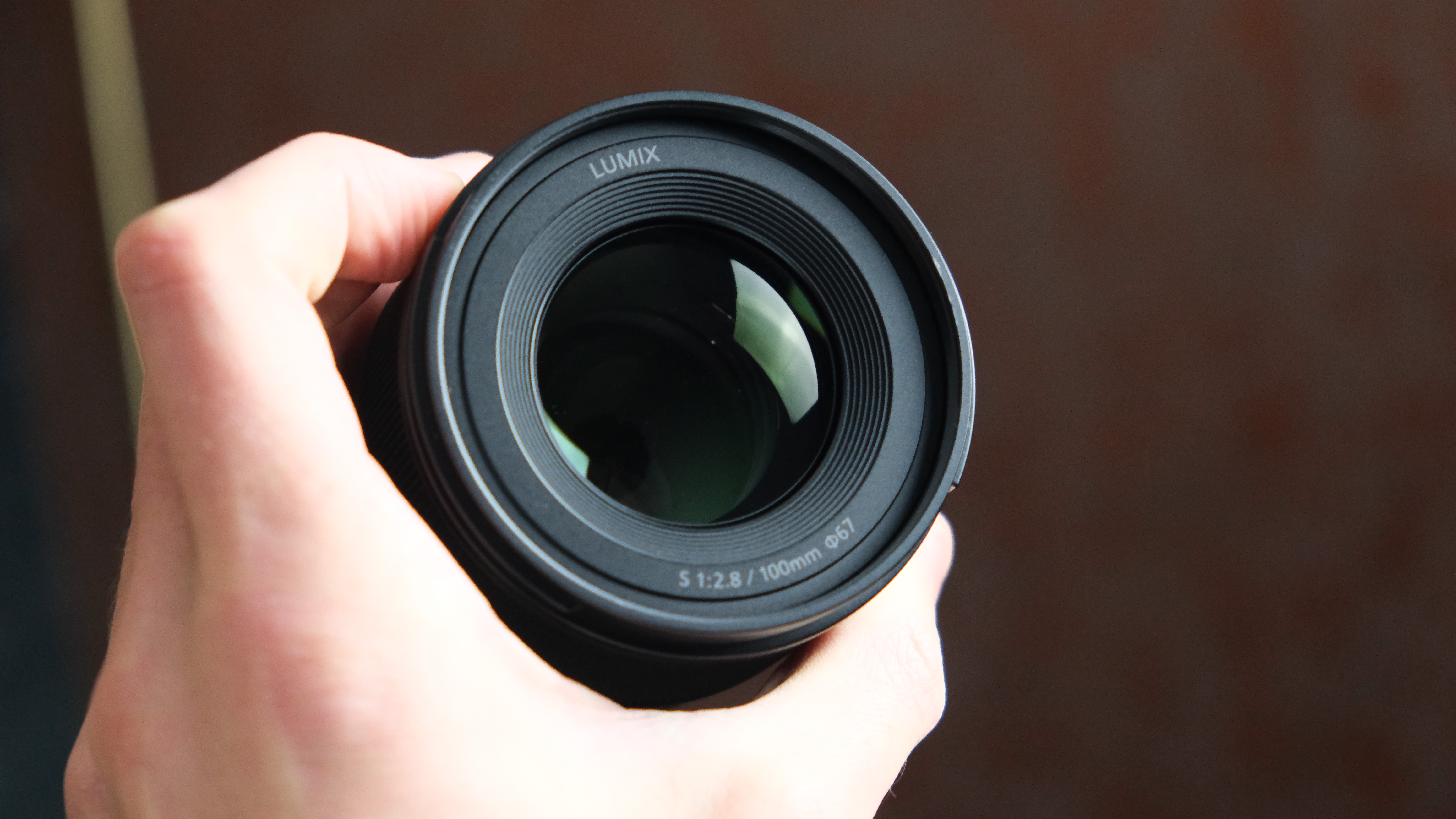
The focus ring offers a good amount of resistance to not be overly sensitive, essential in precise macro focusing. There is a noticeable lack of switches and buttons on the lens, although with no O.I.S in the Lumix S 100mm there perhaps isn’t much need for more switches. But with other brands adding more custom function buttons to their lenses, it is a shame not to see at least one here.
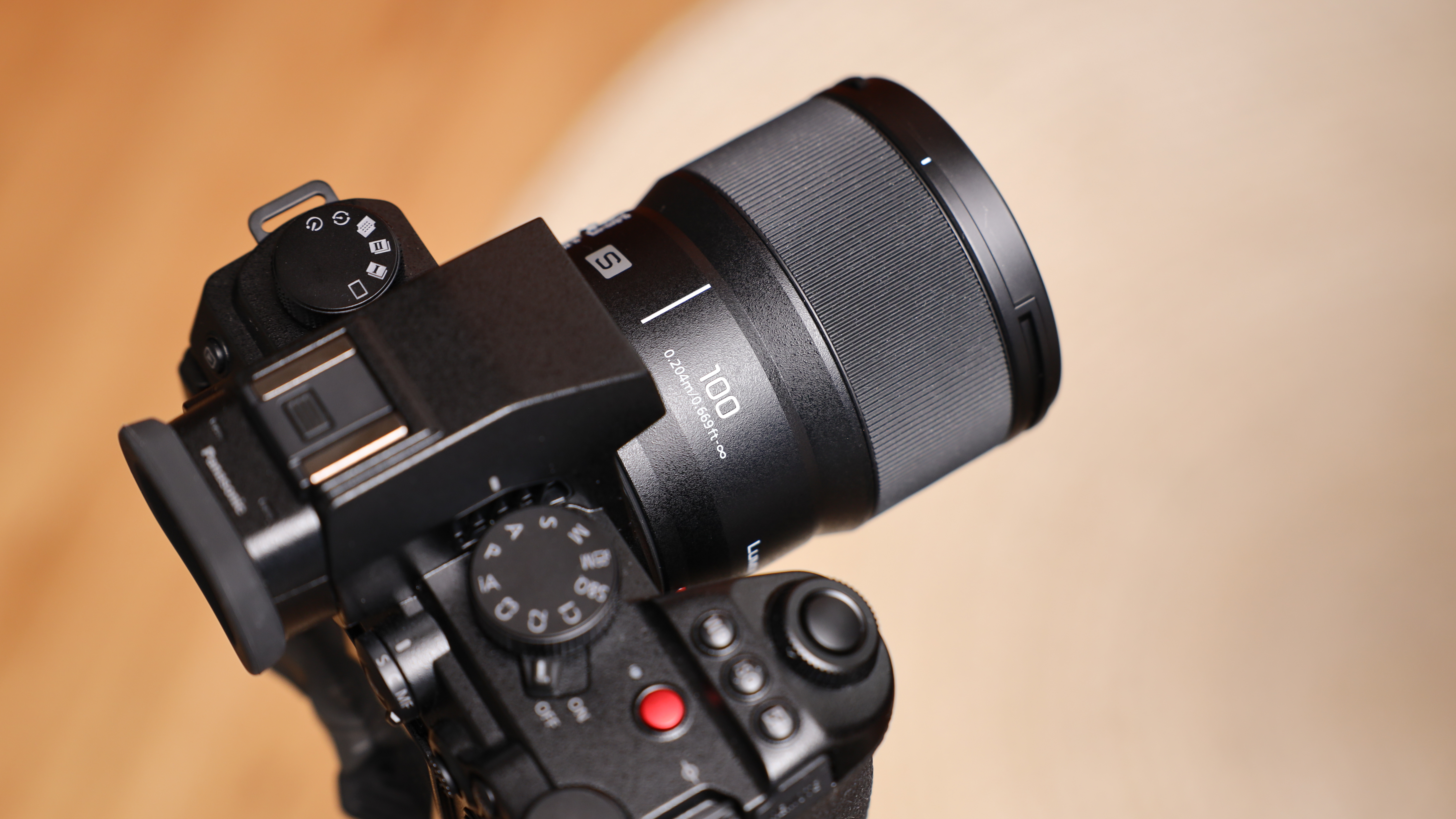
Lumix S 100mm f/2.8 Macro: Performance
Image quality is very good across the frame, especially as you go up through the aperture. Centre sharpness starts strong right out of the gates being pretty close to perfection even at f/2.8. In the corners at f/2.8, it is a little bit soft, but mostly unnoticeable unless you are pixel peeping, and by the time you get to f/4 and beyond, there is no discernable difference between the center and corners to the naked eye.



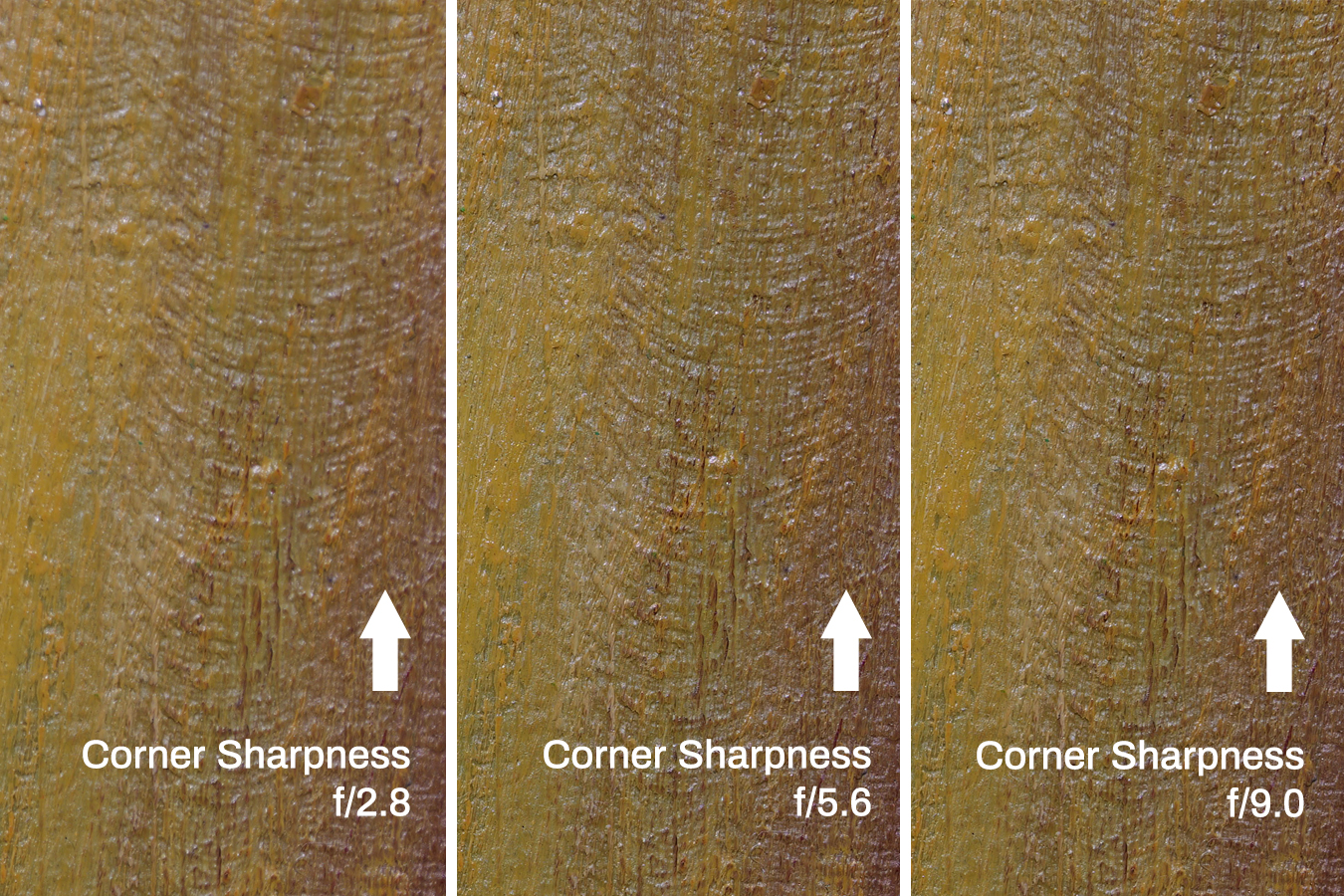
Focusing was nice and snappy when used at a distance, with the new Dual-Phase Linear Motor being near silent in operation, the Lumix S 100mm combined with the Lumix S5 IIX body had no issue locking on and tracking subjects across the frame during stills shooting and also in video. Autofocus was also very accurate, very few of my shots I had to discard due to missed autofocus.
Panasonic has claimed the new lens motor is faster than its previous incarnation – although I didn't notice any dramatic difference in speed driving focus from near to far than with other Panasonic lenses – although this might just be a testament to Panasonic's other lenses.

However, there were occasional struggles when it came to close focusing, with the lens sometimes hunting for focus when used close up to a subject before eventually locking on. This was occasional but unfortunately happened more frequently than I found ideal, although I am not sure how much responsibility to share between the camera and the lens – and this is something that could be improved with firmware down the line.

The Lumix S 100mm on a camera with IBIS like the S5 IIX I am testing on should offer up to 7 stops of correction. Panasonic’s implementation of in-body Image stabilization is absolutely rock solid, unsurprising when Panasonic invented IBIS, and in reality – shooting in low light with the Lumix S 100mm allowed me to stop down to around 1/15 of a second handheld and still get usable shots with care, although your experience might vary depending on how steady your hands are.
Image stabilization is also hugely effective in video, and Panasonic's S5 IIX already provides the most gimbal-like image stabilization system I have used yet, with remarkably less jello-like effects than other brands' cameras. This gets more challenging the longer the focal length, but the 100mm lens performs very well in static handheld shots, and slow pans, although is susceptible to showing up movement more vigorous than that – although nothing unusual there.
There is no optical image stabilization in the lens, however, which is likely a sacrifice made to get the lens down to such a petite size, as incredible as 5-stops of IBIS is, I can’t help wondering if Panasonic's Dual I.S.2 hybrid stabilization system could have achieved even greater heights of handheld steadiness.

Lumix S 100mm f/2.8 Macro: Sample Images
These shots were all taken using the Panasonic Lumix S5IIX camera with its 24MP sensor and the Panasonic Lumix S 100mm f/2.8 Macro lens. All shots are JPEG photos directly from the camera with only minimal editing to correct exposure.



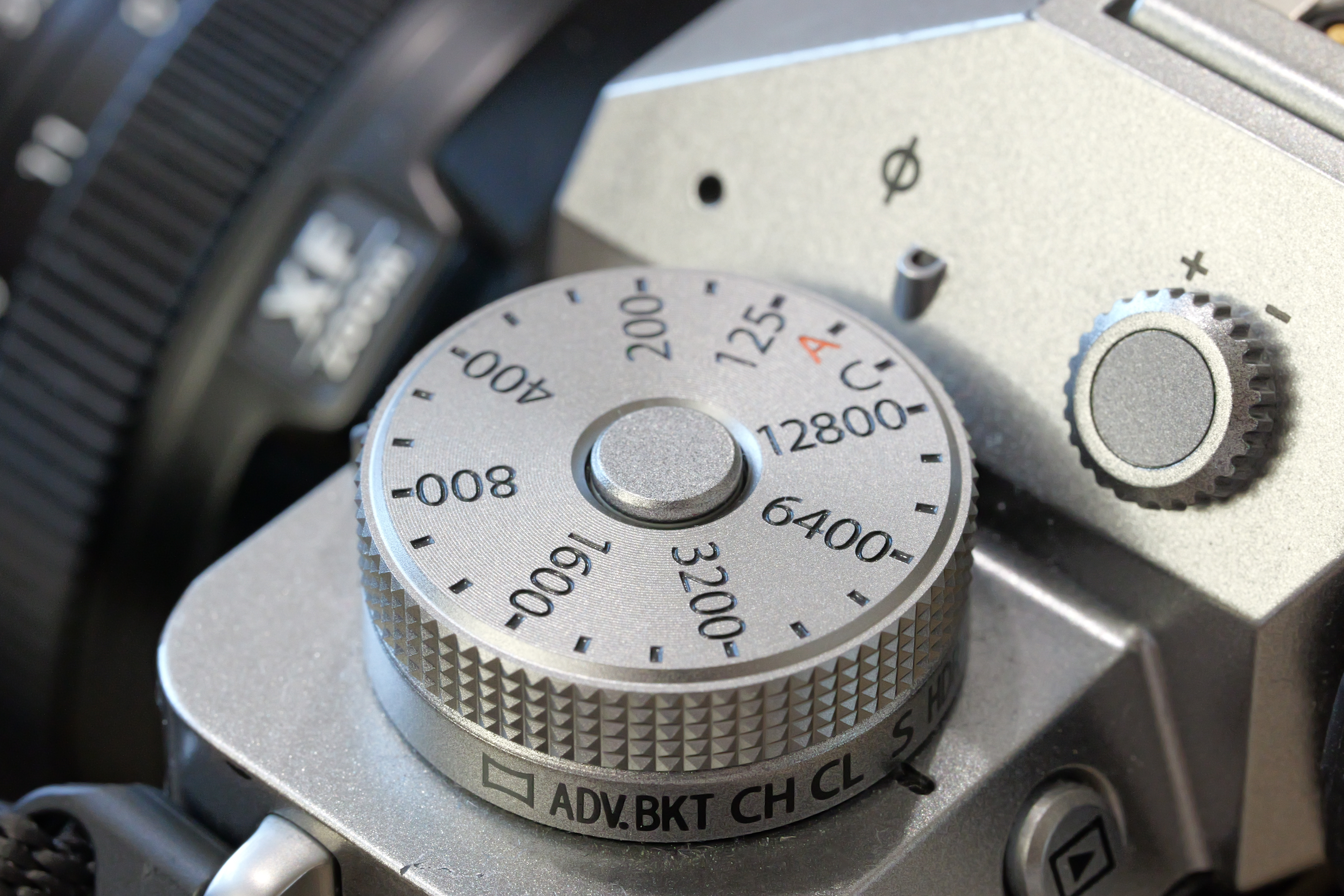


Lumix S 100mm f/2.8 Macro: Lab Results
We run a range of lab tests under controlled conditions, using the Imatest Master testing suite. Photos of test charts are taken across the range of apertures and zooms (where available), then analyzed for sharpness, distortion and chromatic aberrations.
We use Imatest SFR (spatial frequency response) charts and analysis software to plot lens resolution at the center of the image frame, corners and mid-point distances, across the range of aperture settings and, with zoom lenses, at four different focal lengths. The tests also measure distortion and color fringing (chromatic aberration).
Sharpness:
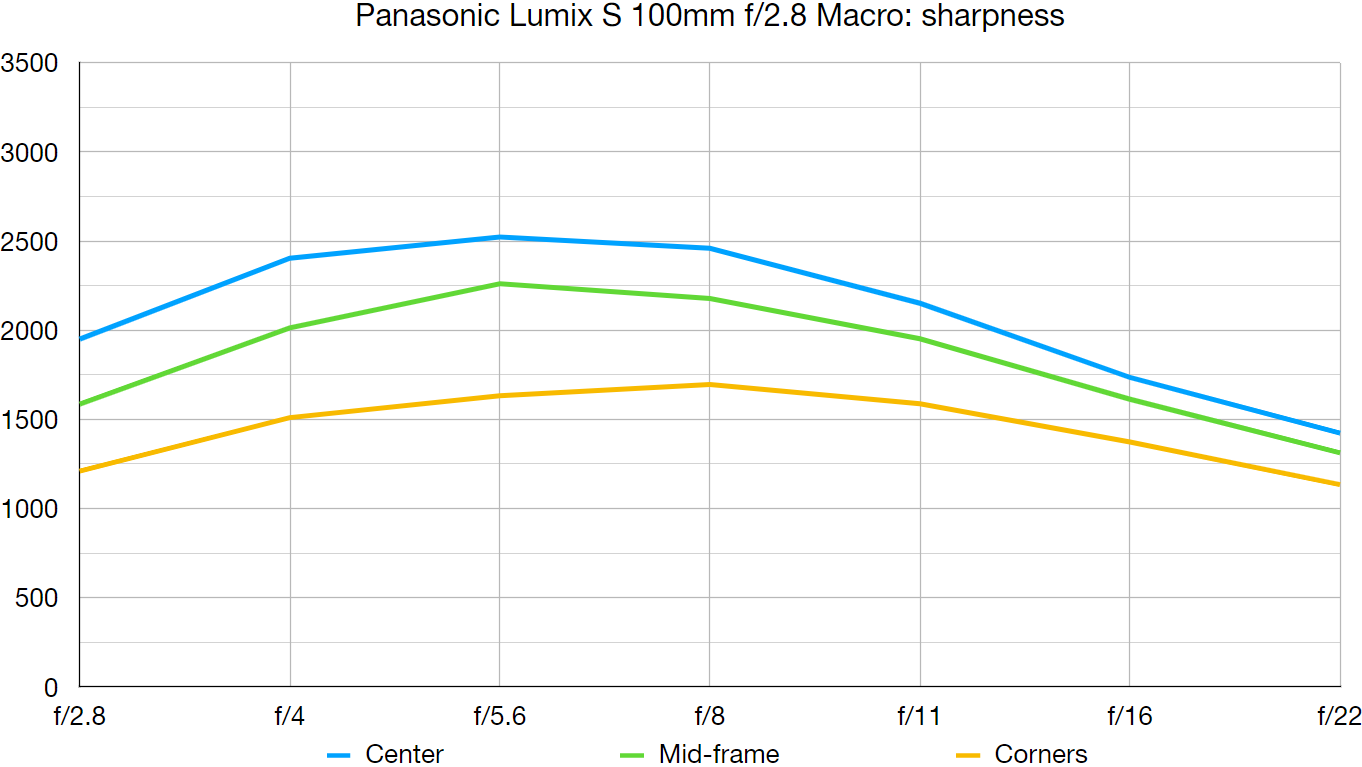
Center and mid-frame sharpness is excellent, throughout the aperture range, though the lens performs particularly well at f/4 to f/8. Corner sharpness isn't quite so impressive, but it's still respectable.
Fringing:
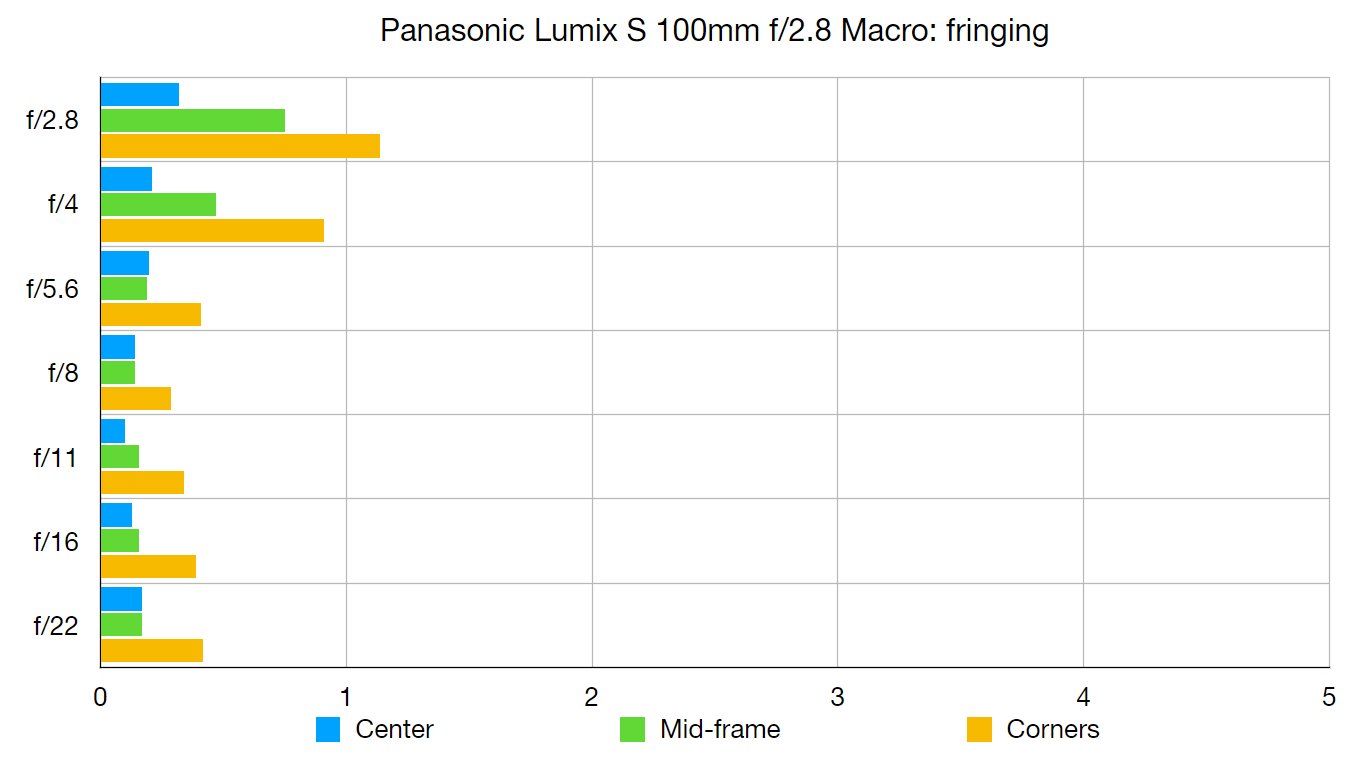
Color fringing is very well controlled and of a low order, across the entire image frame, only becoming slightly noticeable in the corners of frame at f/2.8.
Distortion: 1.9
The lens produces moderate pincushion distortion, though this is a worst-case scenario, as we disable in-camera distortion correction for our testing.
Lumix S 100mm f/2.8 Macro: Verdict
The Panasonic Lumix achieves something special with its diminutive size, for a full-frame macro lens the compactness and lightness achieved are genuinely remarkable and make similar lenses from the other big brands seem almost too big by comparison. The lens also perfectly complements the other prime lenses in Panasonic’s full-frame range, with the nearly same size and weight across the board – making balancing them for video so much simpler.
Performance is excellent, corners are a tiny bit soft wide open, but things sharpen up quickly, with fantastic results across the frame from around f/4. The lens when focused at the near end hunted for focus a little more than I would have liked, although the focus was incredibly silent, and very accurate when locked. The lack of optical image stabilization is actually no issue with Panasonic’s excellent B.I.S., handheld shots and slow pans were held perfectly steady, with only more vigorous movement troubling the stabilization. But I wonder if combination stabilization could have reached even dizzier heights.
If you are a Pansonic shooter then you have been patiently waiting for a Panasonic to release its own Lumix S macro lens – this is a brilliant compact macro lens worthy of running out to add to your system.
| Features | Great standard length 1:1 macro lens, but lacking OIS and doesn't push any boundaries | ★★★★ |
| Design | Weather resistant, and incredibly small and lightweight without sacrificing quality | ★★★★★ |
| Performance | Excellent macro performance, slight corner softness wide open, but very sharp from f/4 | ★★★★★ |
| Value | Competitively priced against the competition, although other brands have a few more features | ★★★★★ |
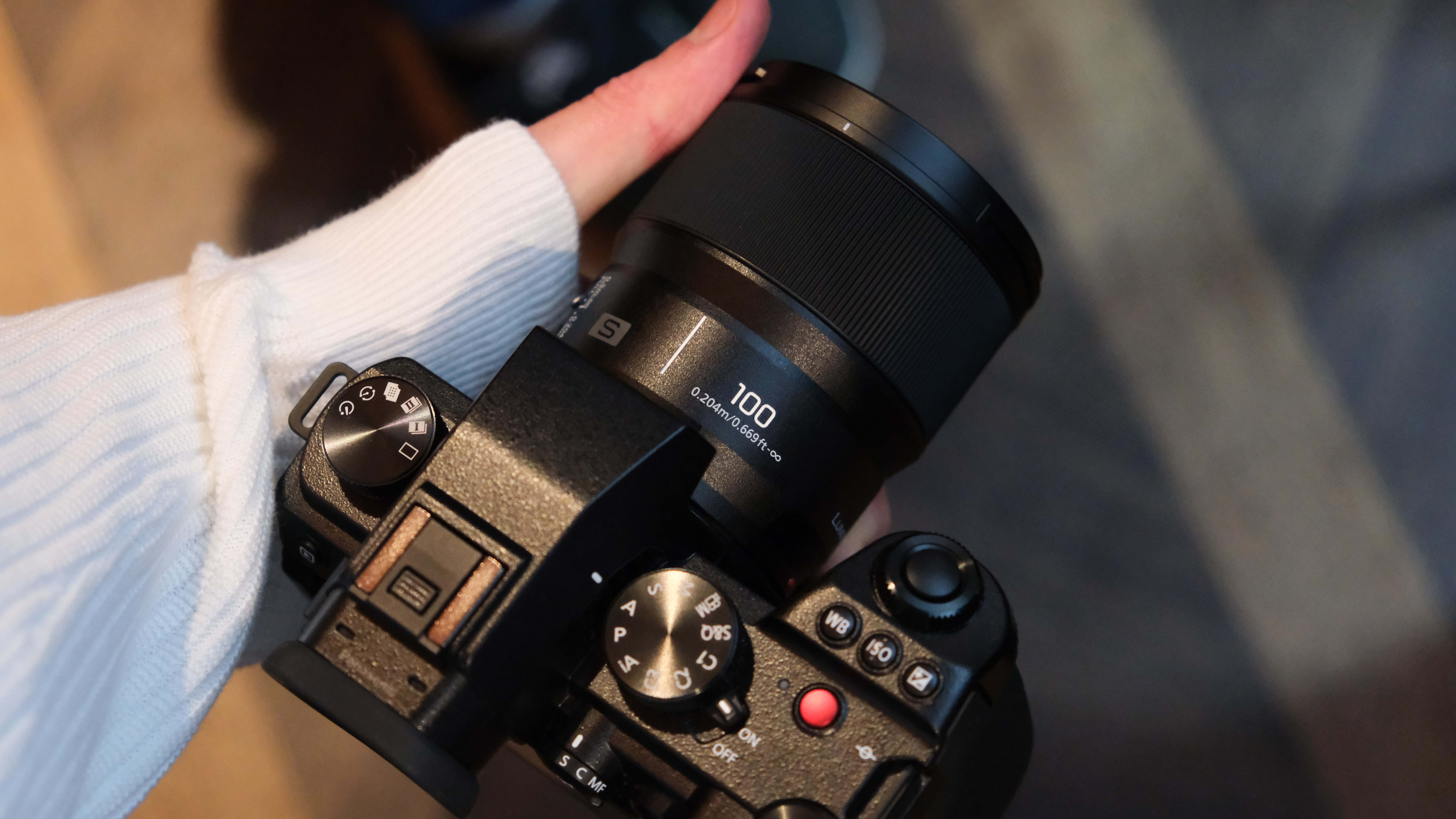
✅ Buy it if...
- You are a Panasonic full-frame shooter who has been waiting for a first-party 1:1 macro lens from Panasonic
- You want a versatile macro lens that works just as well for stills and video
- You want a lens to easily swap in and out with your Lumix S prime lens collection
⛔️ Don't buy it if...
- You need more than a 1:1 magnification
- You want a versatile lens that can cover multiple distances
- Other 0.5x magnification lenses are good enough for your macro needs
Alternatives
The Sigma 105mm f/2.8 DG DN Macro was the macro lens to recommend to Panasonic full frame photographers before the Lumix S 100mm, but the Sigma still holds its own, with quick autofocus, an aperture ring, great image quality, backed up with a solid weather resistant build for around $200 less than the Lumix S 100mm.
If you are only a stills photographer, and you don’t mind manual focusing then the Laowa 90mm f/2.8 2x Ultra Macro APO is definitely one to check out. Offering outstanding image quality from the macro specialists at Venus Optics, the lens has a big 2:1 magnification for enhancing every little detail in your subject.

Gareth is a photographer based in London, working as a freelance photographer and videographer for the past several years, having the privilege to shoot for some household names. With work focusing on fashion, portrait and lifestyle content creation, he has developed a range of skills covering everything from editorial shoots to social media videos. Outside of work, he has a personal passion for travel and nature photography, with a devotion to sustainability and environmental causes.


